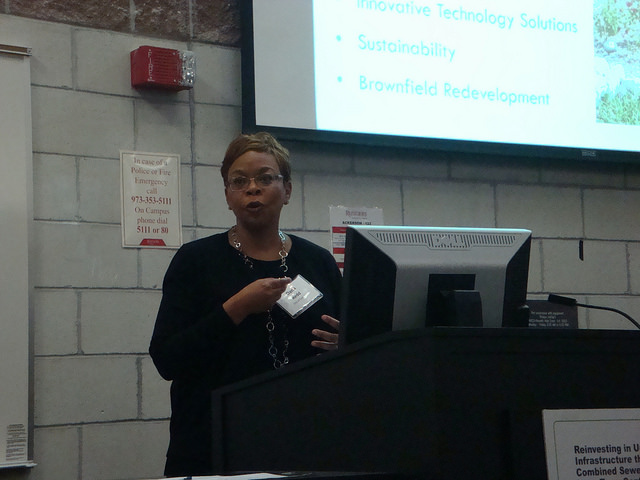New Jersey Future Blog
Old Cities, New Potential?
May 16th, 2007 by Chris Sturm
- The Brookings Institution’s Metropolitan Policy Program has examined 376 U.S. cities and characterized 80 of them as “older industrial cities,” based on their substandard performance on a number of economic indicators, including employment growth, number of new business establishments, poverty rate and income level. Large cities making the list include Los Angeles, Philadelphia, Detroit, Baltimore and Milwaukee.
- These older industrial cities as a group lost 8.3 percent of their job base between 1990 and 2000, compared to 18 percent job growth in the other 296 cities in the study.
- They also had an average unemployment rate in 2000 of 10 percent (vs. 6.5 percent for the other cities), a poverty rate of 23 percent (vs. 15.2 percent), and a median household income only 75 percent of that in the other cities.
- Of 12 New Jersey cities included in the study, five made the list of older industrial cities – Newark, Paterson, Trenton, Camden and Atlantic City. These New Jersey cities generally fared even worse than the older industrial cities as a whole, losing 13 percent of their employment between 1990 and 2000, posting an average unemployment rate of 13.7 percent and showing an average poverty rate of 26.2 percent.
State Must Take the Lead in Urban Revitalization
On May 20, the Brookings Institution will release Restoring Prosperity: The State Role in Revitalizing America’s Older Industrial Cities. This report describes “a particular set of communities that over the past several decades have experienced the steady loss of businesses and jobs, and whose role in the economy, and the economic stability of their residents, has diminished as a result.”
The report also comes with some good news: several demographic trends are converging – robust immigration, an aging population and changing family structures – that are altering the size, makeup and location choices of the nation’s households to the benefit of the nation’s cities. The report provides a prescription for helping older industrial cities take advantage of these trends and get back on their feet by emphasizing their many attributes: waterfronts, walkable urban grids, public transit and historic architecture, as well as employment opportunities, universities, medical facilities and cultural centers.
In particular, Brookings calls for state governments to take a more active role in steering resources to cities that have too long been left to fend for themselves.
Preparing and positioning cities for a new round of growth is especially important in New Jersey, not only to improve conditions for urban residents and businesses, but because cities offer the ideal location for sustainable economic growth while relieving development pressure on our limited remaining open lands. The importance of New Jersey’s cities has been recognized in the State Development and Redevelopment Plan, which calls on the state to make coordinated infrastructure investments in already-urbanized areas. The Brookings report reminds us that the time has come for state government to retool its efforts to make cities “ready to grow.”
The report’s recommendations are applicable to more than just the five New Jersey cities that met Brookings’ definition of older industrial cities. New Jersey has scores of cities, towns and boroughs that did not meet the population and employment thresholds for inclusion in the study, but that nonetheless suffer from many of the same economic woes. For instance, Asbury Park, Wildwood and Salem are performing worse than the average of the 80 struggling Brookings cities in terms of median household income, poverty rate and unemployment rate; 12 other smaller cities, including New Brunswick (despite recent successes), Bridgeton and Paulsboro, are doing worse on at least one of those three measures. And a whole host of other municipalities have experienced rates of job loss as bad as the average of the 80 Brookings cities while underperforming the majority of New Jersey municipalities on poverty, unemployment and income. Examples include West New York, Lodi, Little Ferry, Garfield, Clifton, Dover, Orange, Plainfield, Hillside, Linden, Perth Amboy, Somerville, Long Branch, Pennsauken, Gloucester City and Millville. All of these can benefit from the recommendations presented in the Brookings study.
As the nation’s most developed state, New Jersey stands to benefit more than most states from learning to reinvent its already-built places. Restoring Prosperity offers nationally informed advice on how to do it.
If you have any questions about this issue of Future Facts, please contact Chris Sturm, Senior Director of State Policy.
















